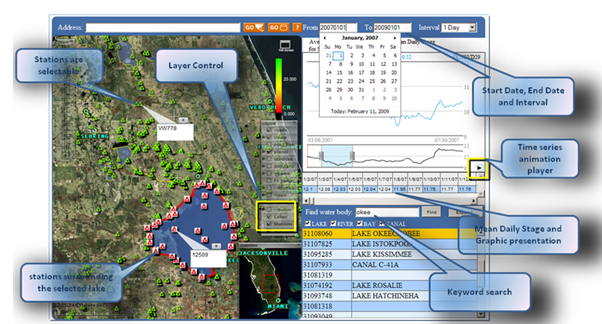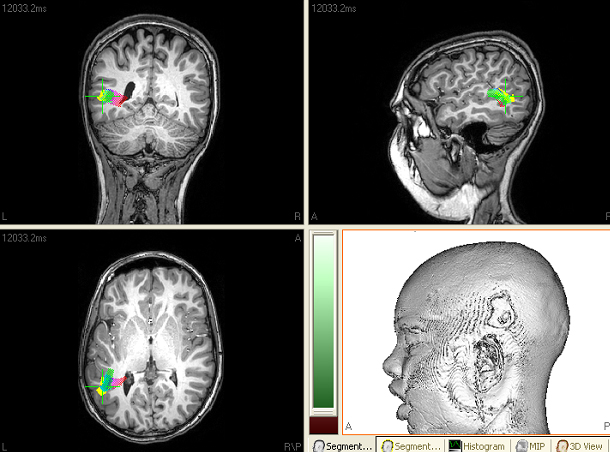Home |
Mission |
Research |
Publications |
Partners |
People |
Students |
Education |
Join Us |
|
Features:   
|
|
Research Activities
Florida International University's (FIU's) second-phase CREST, the Center for Innovative Information Systems Engineering is housed in its School of Computing and Information Sciences and its Department of Electrical and Computer Engineering. The Center's four research thrusts bring together a multidisciplinary group of researchers, large-scale collaborative relationships, and a broad ecosystem of partners to perform research that will lead to information technologies that help to solve critical societal problems of national priority. Information Systems Engineering is a field of critical importance to our nation's continued competitiveness. More effective techniques for managing information, for modeling information, natural, and man-made systems, and for providing access to information are all critical components of Information Systems. Our second-phase CREST's research subprojects combine to perform synergistic transformative research with direct relevance to critical societal problems of national priority, including disaster management, universal access, and brain research/neuroscience. The FIU CREST's Subprojects, inter-related as depicted above, include (1) Effective Access to Complex Multimodal Data with Applications in Disaster Mitigation, (2) Integrated Approach to Information Processing in Neuroscience, (3) Human Computer Interaction for Universal Access, and (4) Complex System Modeling, Analysis, and Realization. Each of these subprojects addresses a critical area in computer science and engineering, yet they are intertwined and mutually supportive. By supporting national research priority areas with innovative information systems that model systems and manage information in more effective ways, we can ensure that our CREST makes a positive societal impact while we strengthen our research programs. We have found that our students, particularly those who are women or from underrepresented populations, are particularly attracted to research with a demonstrable positive impact on society, so these research areas also help us to recruit and retain such students.
 Subproject 1, Effective Access to Complex Multimodal Data with Applications in Disaster Mitigation, focuses on developing effective techniques for managing and providing access to data that varies in type, source, location, time, and certainty by addressing storage optimization, data management, indexing and search, query techniques, and data presentation. Among its applications, it seeks to develop techniques to get the right information to the right people at the right time, thereby helping to mitigate disasters and to recover from them quickly. As a first step toward technologies, FIU is developing the Business Continuity Information Network (BCIN, pronounced "bee-kin") testbed, a web-based service where local businesses, county emergency management, and organizations that assist businesses can gather to share critical information and support continuity efforts before, during and after a disaster. Available year round as a public service, this reliable, business-to-business, community network provides participating companies a tool to track their key employees and supply chain status, and locate needed recovery goods and services.
 Controls for scientific data manipulation and visualization Subproject 2, Integrated Approach to Information Processing in Neuroscience, focuses on an integrated imaging/signal processing approach that will result in comprehensive views of the human brain in greater depth and detail through faster, affordable, more effective, and less invasive methods. Our vision is to establish a multidisciplinary research platform for our researchers and scientists to develop their creative thinking in the information processing field (image and signal) with practical implications to neuroscience in a multidimensional world, integrating spatial and time coordinates with the different sensory modalities that are brought in synergy.
 3-D localization of epileptic focus Subproject 3, Human Computer Interaction for Universal Access, has a long-term goal to contribute research towards the broader long-term goal of Universal Access to information technology, which will have critical societal importance in the near future, as it strives to enable anyone, anywhere, anytime to efficiently access the information technology fabric of our society, regardless of the user.s disability status, choice of platform or interaction environment. One of the key goals proposed for the .HCI for Universal Access. sub-project was the detection of affective states from non-invasive monitoring of physiological signals in a computer user. Initial work in this area has led to the development of a digital signal processing method for the analysis of the Pupil Diameter (PD) measurements that we obtain from an eye gaze tracking system, to emphasize the increases in pupil diameter that results from the elicitation of mild mental stress in human subjects, during a human-computer interaction task. The following graph shows how we have been able to detect such stress.
 Subproject 4, Complex System Modeling, Analysis, and Realization Subproject 4 is targeted to achieve research goals outlined in several recent NSF research initiatives including Science of Design and Software for Real-World Systems. The Subproject's research seeks to improve the state of the art of effectively abstracting, capturing, analyzing, and simulating the underlying behavioral models of complex real-world systems. The research addresses major research issues in several emerging computing paradigms including multiple agent systems (MAS) and scientific workflows (SWF), contribute to the worldwide research effort on building highly dependable software systems (a grand research challenge identified by both the Computing Research Association in the U.S. and the British Computer Society) using formal verification, and leverage cutting edge model driven engineering technologies in model realization.
 An Aspect-Oriented Representation of BDI Agent Model |
"CREST research has resulted in significant growth of our computing-related doctoral programs." "The Center's research agenda is bold, forward looking...[and will] create a highly competitive research center capable of training students who possess critical research and technology skills in technical areas that are greatly needed if the United States is to stay competitve in the global IT markeplace." "By applying its research to themes critical to the State of Florida, such as disaster management, healthcare for our diverse population, and universal access to information systems, we believe that the Center will enable technology creation that will help keep the United States and Florida competitive in the increasingly-global IT marketplace." "Together we have already established a brain research laboratory and an optical imaging laboratory..." |

This material is based in part upon work supported by the National Science Foundation under Grant Numbers HRD-0317692 and HRD-0833093. Any opinions, findings, and conclusions or recommendations expressed in this material are those of the author(s) and do not necessarily reflect the views of the National Science Foundation. © 2003-2010 Florida International University
